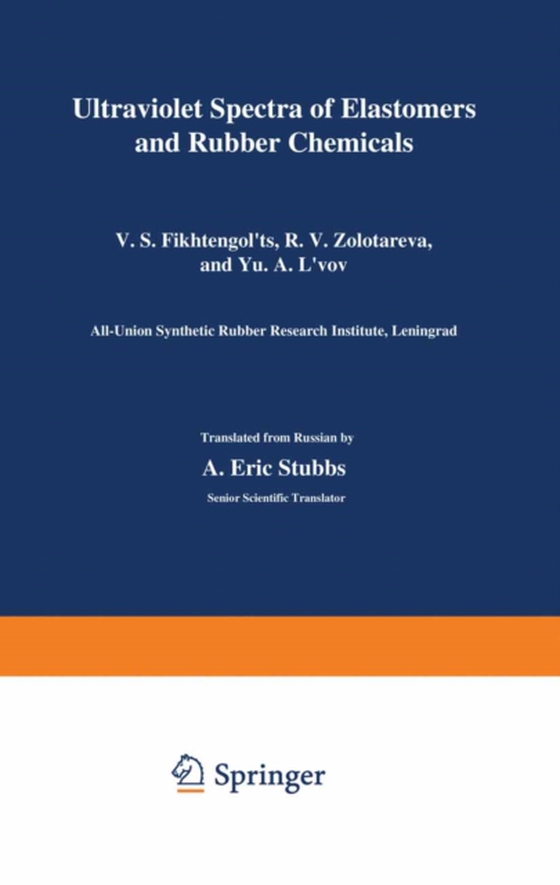
Ultraviolet Spectra of Elastomers and Rubber Chemicals e-bog
436,85 DKK
(inkl. moms 546,06 DKK)
In the modern organic synthesis industries, one of which is the synthetic rubber industry, ever increasing use is made of physical and physicochemical methods of analysis, which sur- pass chemical methods in speed, accuracy, and sensitivity. By these methods it is often possible to arrive at the solution of problems in the investigation of complex mixtures of organic products which are not amen...
E-bog
436,85 DKK
Forlag
Springer
Udgivet
6 december 2012
Genrer
TGMP
Sprog
English
Format
pdf
Beskyttelse
LCP
ISBN
9781461595915
In the modern organic synthesis industries, one of which is the synthetic rubber industry, ever increasing use is made of physical and physicochemical methods of analysis, which sur- pass chemical methods in speed, accuracy, and sensitivity. By these methods it is often possible to arrive at the solution of problems in the investigation of complex mixtures of organic products which are not amenable to the usual chemical methods of analysis. One such physical method is ultraviolet spectrophotometry. The field of application of this method is restricted, in the main, to aromatic compounds and to systems containing double bonds conjugated among themselves or with functional groups. In the synthetic rubber industry ultraviolet spectroscopy finds appli- cation in the analysis of a great variety of substances used in that industry: for the determination of impurities in monomers and intermediate products, in the study of the composition of certain polymers, for the quantitative estimation of various ingredients in rubbers, in the control of certain copolymeriza- tion processes, and for many other purposes. The method can be used for the identification of certain compounds and can be applied in the determination of the composition of syn- thetic rubber samples. Shortcomings of the method, which limit its analytical application in certain cases, are the super- position of absorption spectra and their inadequate selectivity.
 Dansk
Dansk

